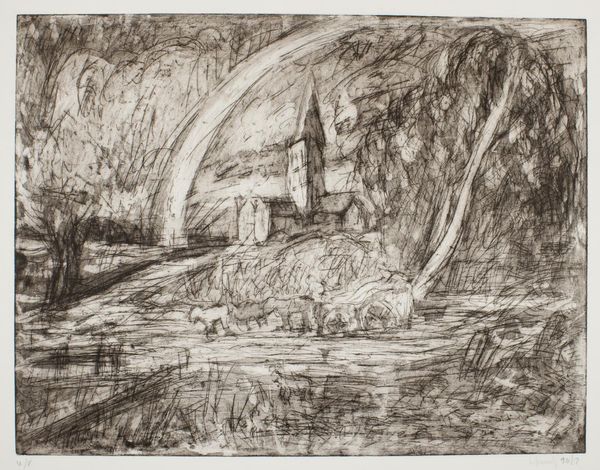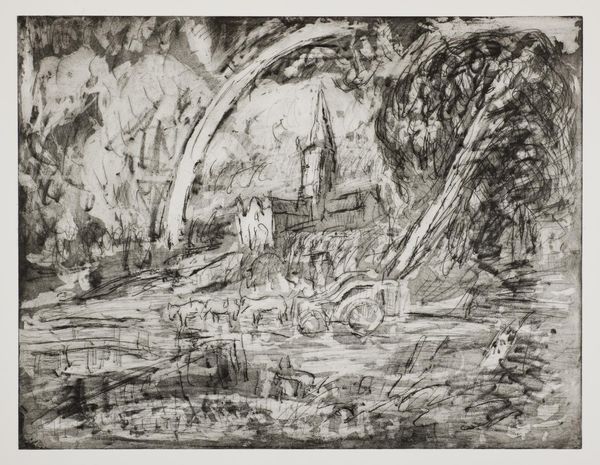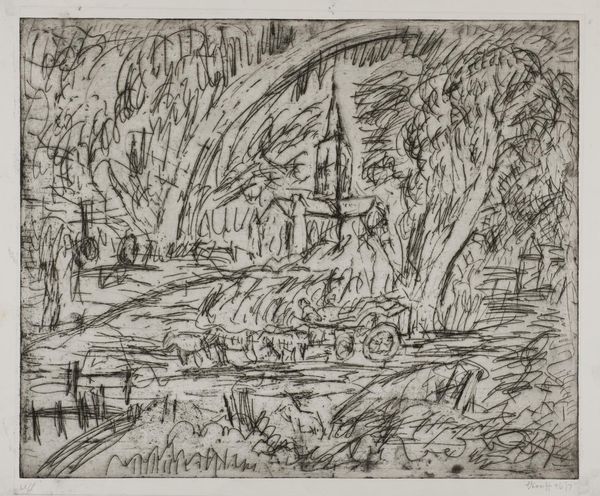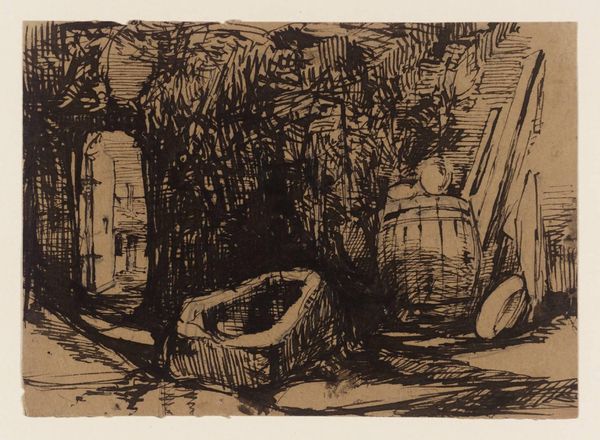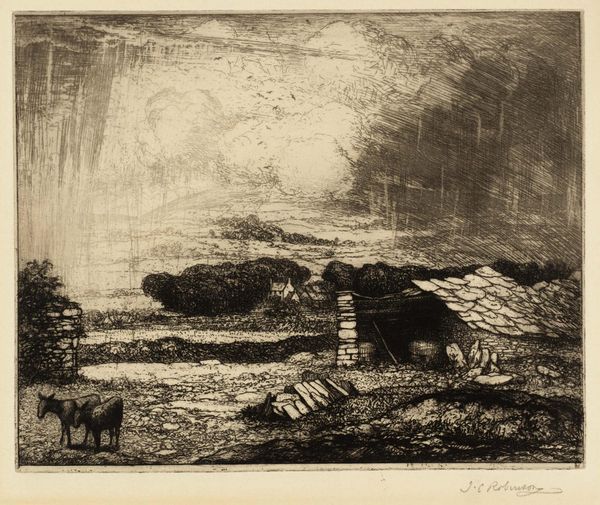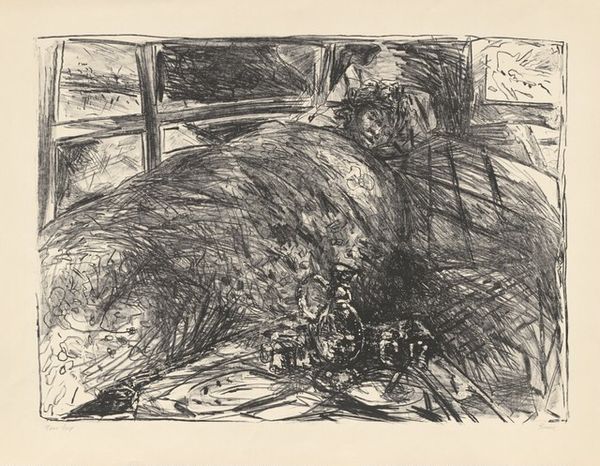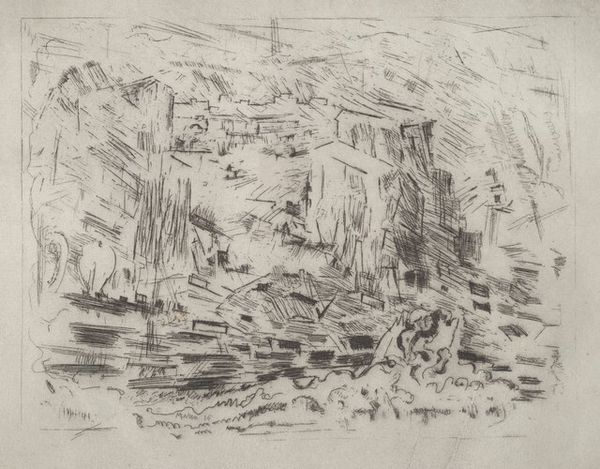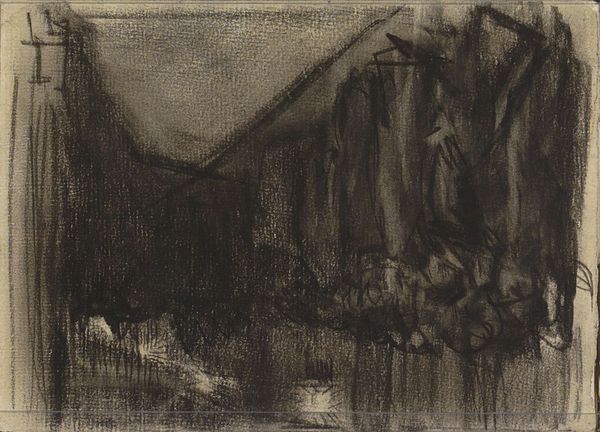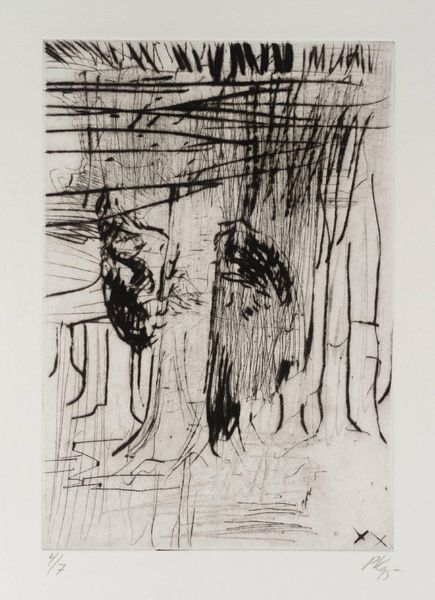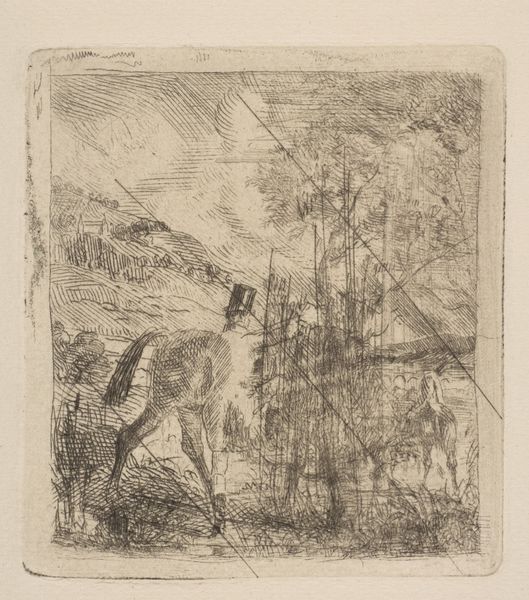
Copyright: © Leon Kossoff | CC-BY-NC-ND 4.0 DEED, Photo: Tate
Editor: This is Leon Kossoff’s "Salisbury Cathedral from the Meadows (2)." The scene, rendered in strong, dark lines, feels both familiar and unsettling. What symbolic weight do you think the image of the cathedral holds here? Curator: The cathedral, often a symbol of stability, is engulfed by gestural, almost chaotic lines. It evokes a sense of memory – not a clear, pristine recollection, but one weathered by time and emotion. Do you see how it is framed by the arch of the rainbow? Editor: Yes, I see that, and it almost feels like it is being swallowed by the landscape! Curator: Exactly! The rainbow itself, traditionally a symbol of hope, here feels almost like a looming presence, a bridge not just to the divine, but perhaps to a more complex, even threatening future. Editor: I never would have looked at the rainbow that way, I like that the hope could be seen as uncertain. Curator: Considering Kossoff's background, the weight of the cathedral as a cultural and emotional symbol seems intentionally complicated.
Comments
tate 6 months ago
⋮
http://www.tate.org.uk/art/artworks/kossoff-salisbury-cathedral-from-the-meadows-2-p11707
Join the conversation
Join millions of artists and users on Artera today and experience the ultimate creative platform.
tate 6 months ago
⋮
This print is one of many etchings executed by Leon Kossoff in response to, and literally in the presence of, oil paintings by other artists; in this case Salisbury Cathedral from the Meadows, 1831, by John Constable (1776-1837), owned by the National Gallery, London. Tate owns two prints by Kossoff after this Constable painting (Tate P11706-7). The artist’s ability to explore a number of separate responses while making drawings and prints from a single subject is illustrated in these etchings. This print was never published as an edition; Tate owns the second trial proof.
